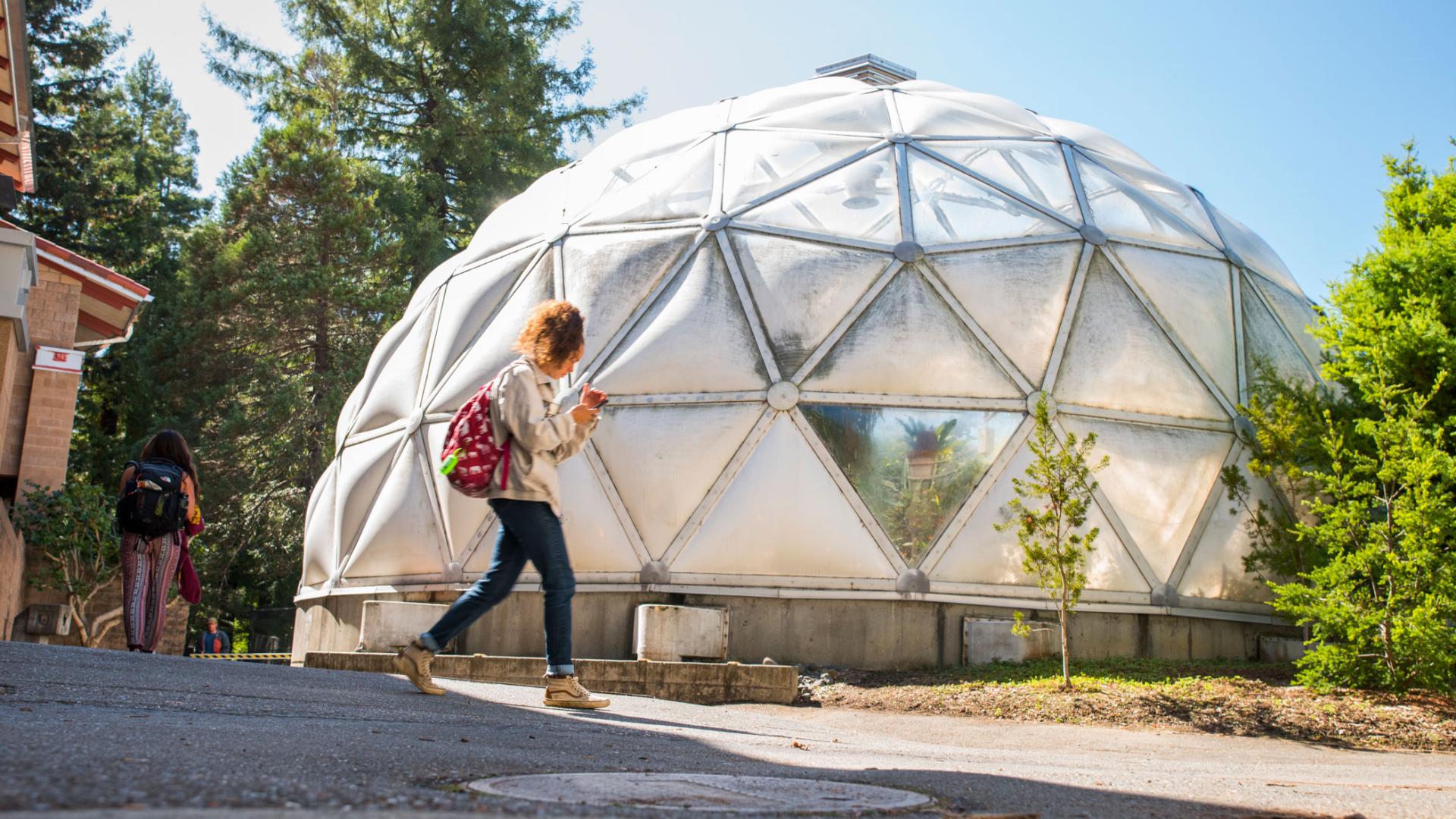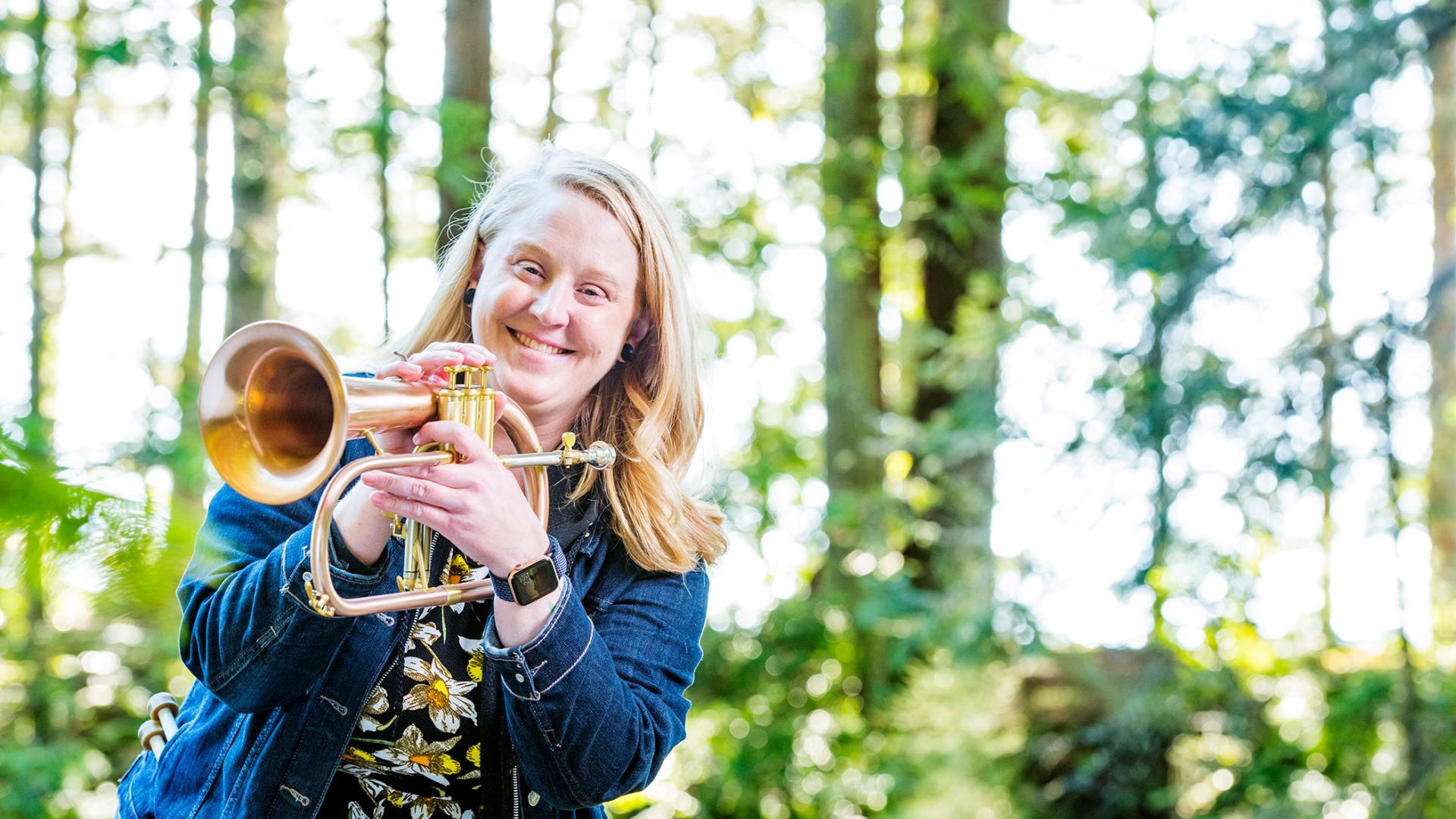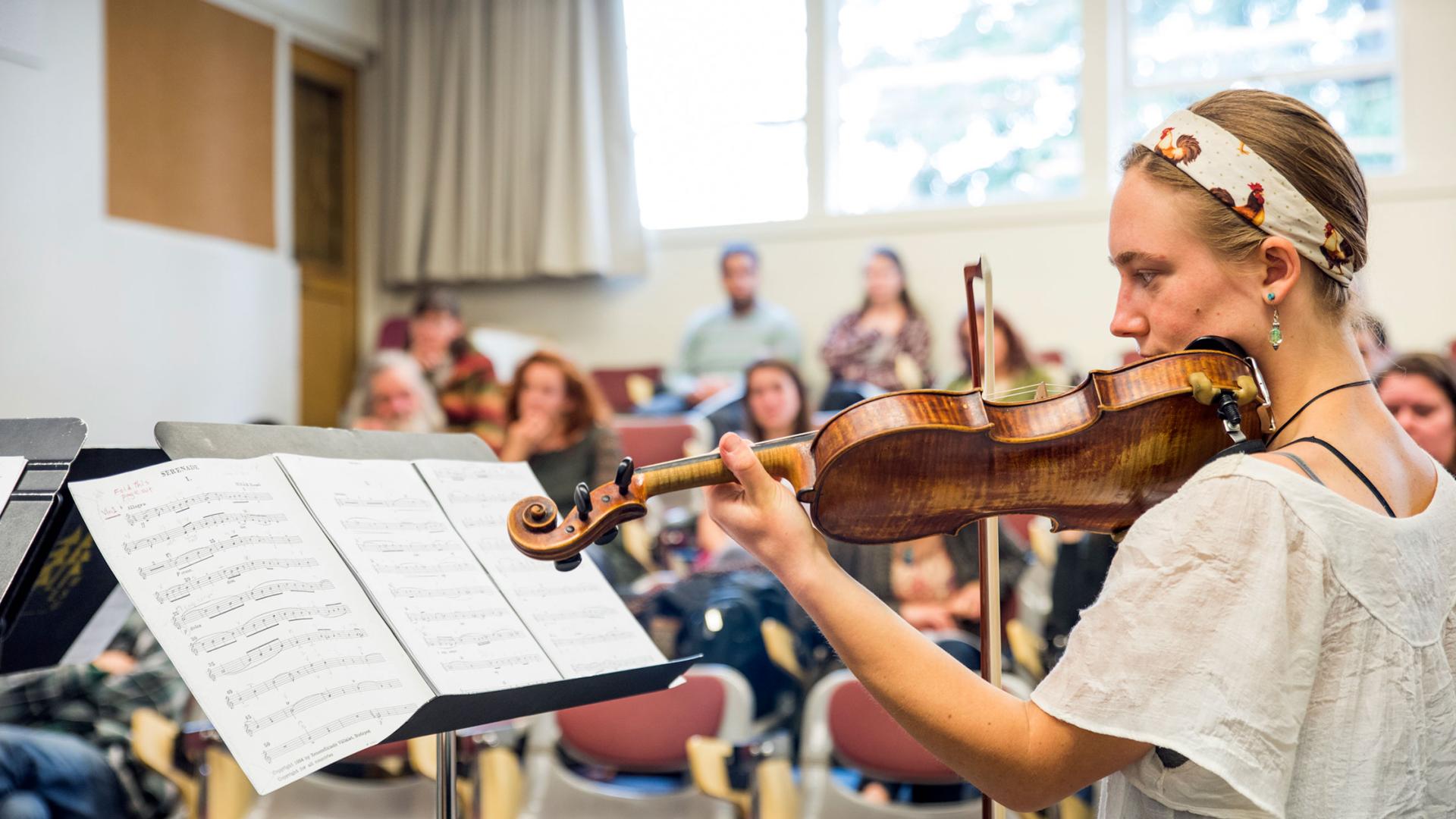Dawn Blake
Breadcrumb
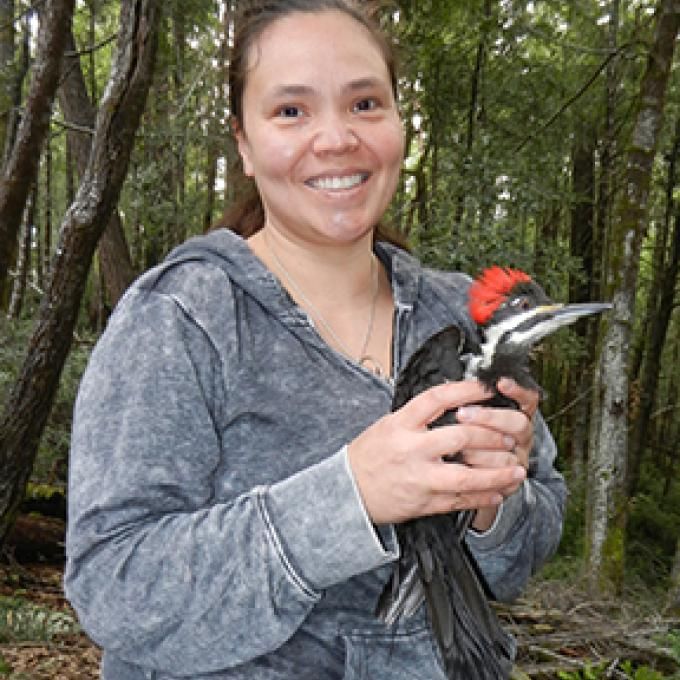
Advisor
Matthew JohnsonDawn Blake, 2018
Thesis:
After Humboldt, Dawn worked as a wildlife biologist for the Hoopa Valley Tribe.
For her thesis, Dawn used radio telemetry to track the movements and document habitat selection of Pileated Woodpeckers on the Hoopa Valley Reservation. This work is significant because the species is generally associated with old trees and thus may be responsive to timber management practices, the species is very important culturally for the Hupa, and because almost no research has been conducted on pileateds in California. She hopes to be able to identify forest stands and tree or snag structures important for this species, to inform future forest management and ensure the persistence of this vital species on the landscape.
Brooks Estes
Breadcrumb
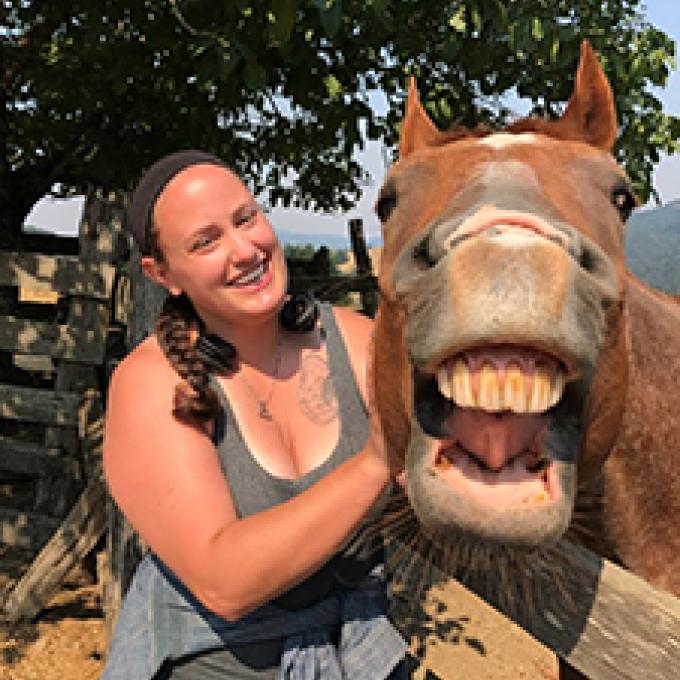
Advisor
Matthew JohnsonBrooks Estes, 2019
Thesis:
A student of the Environment & Community MA program, Brooks’s research focused on the knowledge and attitudes of Napa Valley wine producers regarding integrated pest management techniques, and their views on conservation issues in general. She completed a mixed-methods project, sending surveys to wine producers and conducting follow-up semi-structured interviews with a subset of respondents. Her research addressed a gap in understanding farmer knowledge and motivations related to sustainable practices, and it is rooted in cognitive hierarchy literature to investigate how vineyard producers in Napa Valley view the use of barn owl nest boxes as a tool for integrated pest management.
Eleanor MacDonald
Breadcrumb
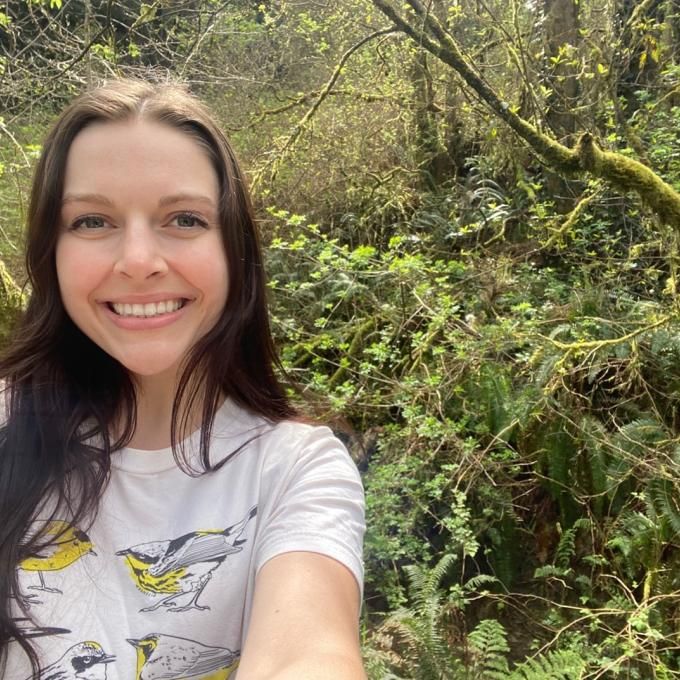
Advisor
Matthew JohnsonEleanor MacDonald,
Thesis:Examining the effects of songbird nest boxes on ecosystem services and avian community composition in Napa Valley vineyards
Eleanor is investigating how the addition of nest boxes affects bird communities and whether this has any top-down effect on insects in Napa Valley winegrape vineyards. Her project focuses on winegrape vineyards that lie along gradients of local habitat and landscape complexity and will also address how local habitat and landscape composition influence bird communities. She will examine avian point counts and insect sampling conducted for two seasons on 20 vineyards, 10 with existing nest boxes and 10 with nest boxes added between field seasons. Eleanor is interested in how land use influences biological communities and how promoting native species in agricultural landscapes could benefit both biodiversity and farm productivity alike. This research has the potential to offer deeper insights for management decisions concerning pest control by investigating the potential benefits of attracting more insect-eating birds to agricultural landscapes.
Shannon Mendia
Breadcrumb
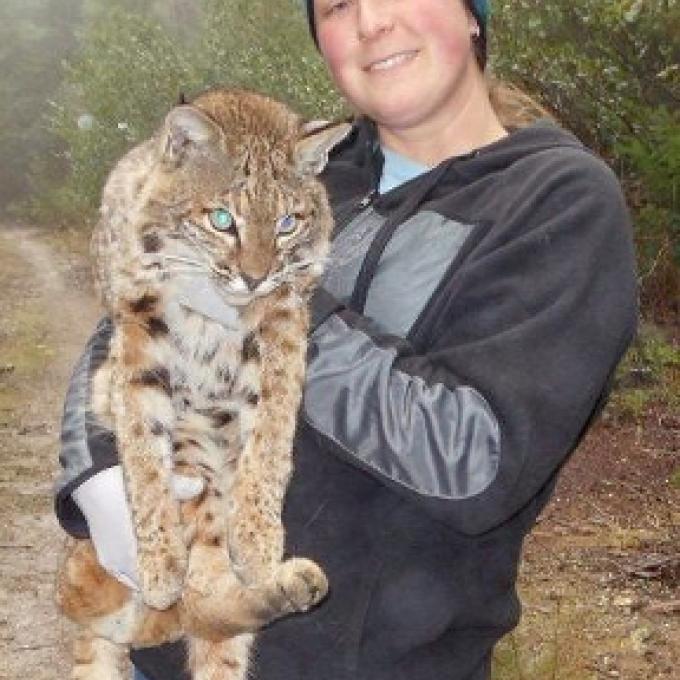
Advisor
Matthew JohnsonShannon Mendia, 2016
Thesis:
After Humboldt, Shannon continued to work as a wildlife biologist for Hoopa Valley Tribal Forestry, and then on to the US Forest Service Pacific Southwest Research Station.
For her thesis, Shannon examined the relationship between bear damage to trees and bird community composition and structure (especially cavity-nesters, such as woodpeckers) on the Hoopa Valley reservation. She surveyed stands historically clear-cut by the Bureau of Indian Affairs (BIA) and determined whether bears function as ecosystem engineers by killing trees and creating structural complexity in otherwise homogenous environments. Shannon's research helped reveal the cost of bear damage, in terms of lost timber value, and the benefit of bear damage in terms of enhanced habitat for species culturally significant to the Hupa.
Carrie Wendt
Breadcrumb

Advisor
Matthew JohnsonCarrie Wendt, 2016
Thesis:
After Humboldt, Carrie went on to work as a partner biologist for the Natural Resource Conservation Service and Point Blue Conservation Science.
For her thesis, Carrie studied the nest box and habitat characteristics that predict barn owl nest box occupancy on winegrape vineyards in Napa, California. Viticulturists have been deploying barn owl nest boxes on vineyards to assist with rodent pest removal for decades, but ecologists have not thoroughly examined this system. Her research aimed to answer the following questions: What local and landscape-scale habitat characteristics predict nest box occupancy? How does nest box design and orientation influence occupancy? Carrie's results helped inform vineyard managers on ideal nest box design and placement in order to maximize occupancy, and therefore the potential for rodent removal services. Installing nest boxes in suitable habitat may benefit barn owls by increasing artificial nesting sites where natural sites are limited. She also surveyed farmers to better understand rodent control practices and the perceived effectiveness of barn owls at removing rodent pests and mitigating rodent damage.
Jadzia Rodriguez
Breadcrumb
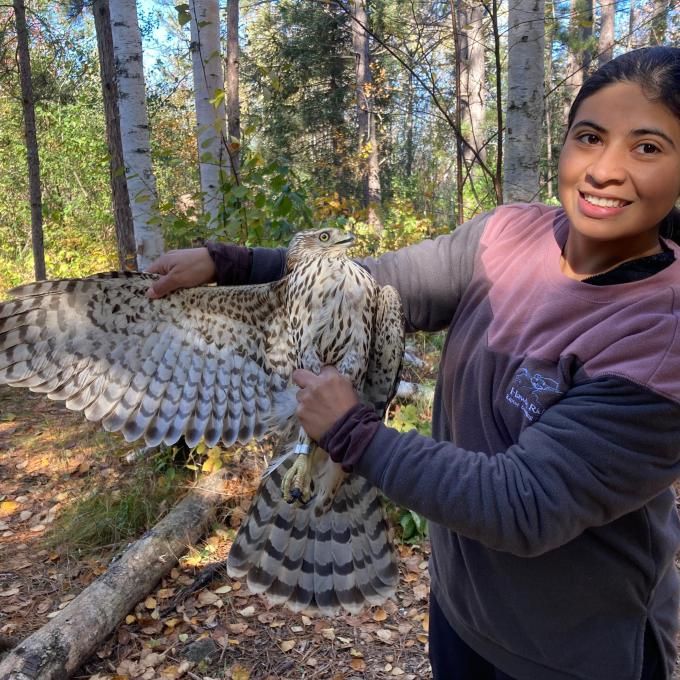
Advisor
Matthew JohnsonJadzia Rodriguez,
Thesis:Effects of vegetation on the behavior of hunting barn owls (Tyto furcata) and their prey
Jadzia is studying how changes in habitat and vegetation affect the behavior of hunting barn owls and their prey. She is interested in how these altered behaviors could affect the outcome of a predator-prey interaction. In the spring and summer of 2024, Jadzia deployed GPS tags fitted with accelerometers on adult barn owls to reveal the precise location of where they kill their prey. This work was conducted in winegrape vineyards in Napa Valley, California, which have predictable changes in vegetation due to management such as cover crop mowing and grapevine growth. This research may help guide vineyard management practices by determining which habitat variables are associated with a predator’s successful hunting behavior.
Jennifer Brown
Breadcrumb

Advisor
Matthew JohnsonJennifer Brown, 2016
Thesis:
After Humboldt, Jen went on to work as a veterinary technician in Humboldt County, and then as a wildlife technician with the Yurok Tribe.
For her thesis, Jennifer examined the incidence and prevalence of a disease-causing fungus on frogs in coffee farms in Jamaica.Batrachochytrium dendrobatidis(Bdfor short) is a fungus that causes Chytridiomycosis, an infectious disease affecting the survival of amphibians worldwide. Previous research has hypothesized that Bd is positively associated with forest cover, perhaps because a closed canopy is more moist and favorable for fungi. Jennifer tested this hypothesis by examining Bd loads on frogs captured on coffee farms that span a gradient of shade canopy cover. She hoped to find an optimal vegetative structure type that promotes a balance between frog diversity/richness and sub-lethal chytrid fungus infections. Her research provided a useful tool for understanding how to manage agriculture practices, such that maximum conservation of frog species is possible.
Ximena Gil
Breadcrumb
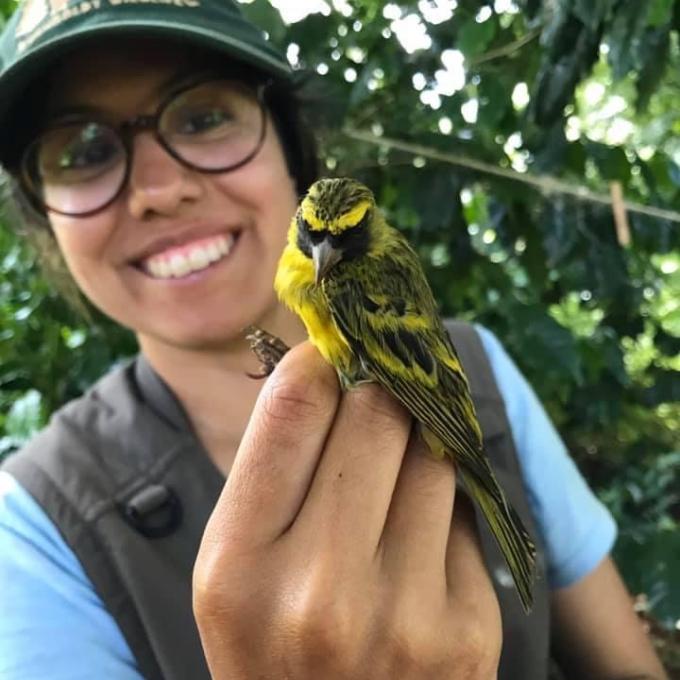
Advisor
Matthew JohnsonXimena Gil,
Thesis:Do rangeland management practices incentivized by California's Healthy Soils Program confer co-benefits for both birds and ranchers?
Rebecca Green
Breadcrumb
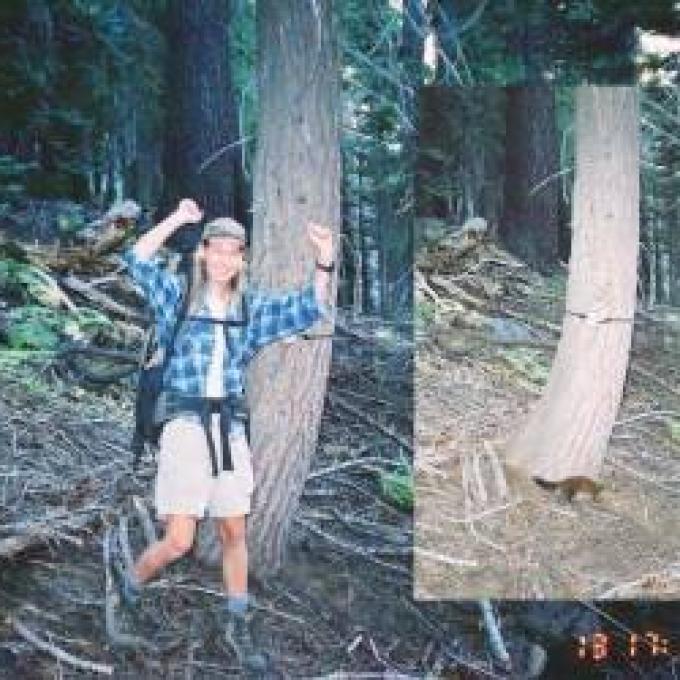
Advisor
Matthew JohnsonRebecca Green, 2007
Thesis:
After Humboldt, Rebecca went on to earn a PhD at UC Davis.
For her Humboldt thesis, Rebecca investigated the distribution of American marten, fisher and other medium-sized carnivores in a variety of habitats and elevations in the southern Sierra Nevada mountains. Track plates and remote cameras were used to detect and provide permanent records of species in habitat types ranging from nearly barren alpine areas to mid-elevation giant sequoia groves to foothill hardwood forests. Vegetation and presence/absence data from these surveys allowed Rebecca to evaluate the performance of several habitat models for the American marten within Sequoia and Kings Canyon National Parks. Information from this project was reported to Park Service biologists and other wildlife managers in the region to promote awareness and understanding of the current habitat conservation needs of martens and fishers in the Sierras.
Chris Smith
Breadcrumb

Advisor
Matthew JohnsonChris Smith, 2014
Thesis:
After Humboldt, Chris went on to work as a field ornithologist in Australia and New Zealand.
Chris studied the effects of shade trees in Kenyan coffee farms on bird abundance and species richness. Virtually no research had been done in coffee on bird communities in Africa, and it was currently unknown how certification programs that advertise coffee as "shade grown" or "bird friendly" actually affect birds. Shade trees may also be habitat for insectivorous birds that help remove pests from the coffee. Chris's results helped reveal relationships between farm vegetation and the bird community to inform future bird conservation and future research on the delivery of pest control services by birds.


